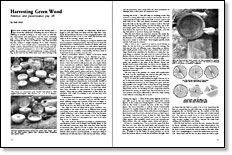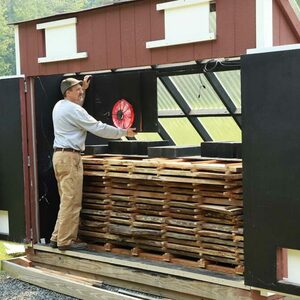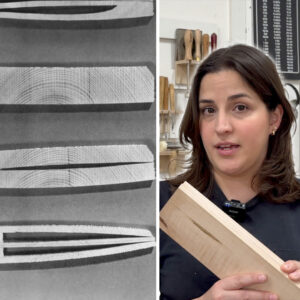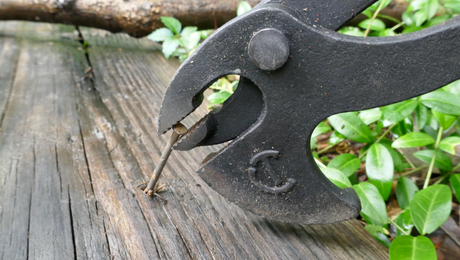
Synopsis: Dale Nish says finding green wood is almost as fulfilling as actually working it. The best wood cannot be purchased from a lumberyard or hardwood dealer; you must cut your own. He talks about where to find it and which species are best for working, what equipment you need to cut your own wood, and how to sharpen your tools effectively for such work. He explains how to cut green wood and how to cut it for figure, as well as how to use stumpwood and burls. He also describes how to handle green flitches and how to season it after you turn it.
From Fine Woodworking #16
I have been working with green wood for several years. I have found the satisfaction of finding the wood almost as fulfilling as actually working it. In some cases, as with life, the expectations and anticipation are the most rewarding part. Once while deer hunting, I found a large, soft maple burl growing at the base of a small tree. The burl encircled the tree, rising to a height of perhaps 30 in. with a diameter of over 48 in. Over several years I envisioned the turnings which could be obtained from a burl of such beauty and size. At last I received permission to cut it off, and gathered together the necessary tools and equipment, a major undertaking, as the burl was far off the main road. After arriving at the tree and inspecting it carefully, an enthusiastic friend and I began to saw—the chain was sharp and the chips flew. Suddenly the bar fell into the burl. It was completely hollow. The only sound wood was a 2-in. to 3-in. shell. The burl was of no value at all for turning. Maybe next time.
The sources of wood for turning or carving are limited only by your patience and perseverance. The best wood cannot be purchased from a lumberyard or hardwood dealer, and even if the desired species is available, you will still be limited by the sizes offered. Most of us live where species growing locally far exceed species available commercially, but if you want to work local wood, you must cut your own.
Wood is everywhere. Robert L. Butler, in his book Wood for Wood Carvers and Craftsmen (A.S. Barnes Co., Inc., Cranbury, N.J. 08512), has a chapter aptly titled “Wood Is Where You Find It.” In Utah, which is not noted for its forests, I have harvested locally grown oak, ash, maple, black locust, honeylocust, mulberry, English walnut and black walnut, American and Siberian elm, ailanthus, catalpa, cottonwood, poplar, boxelder, aspen, chestnut, sycamore, apple, pear, cherry, plum, peach, apricot and more. Wood is everywhere. I have found it in firewood stacks, trees bulldozed to clear building sites, limbs left from logging operations, windfalls after a storm and orchards being uprooted. Other good sources of turning and carving wood are tree-removal companies, city shade-tree departments, local sawmills, landfill or dump areas and friends and neighbors who know you are a wood nut and inform you when they see trees being cleared. Local sawmills frequently have short or crooked logs which have been discarded as uneconomical for processing into lumber. These logs are either inexpensive or free. Show appreciation with a gift of a turning or two and see how your supply increases.
For the full article, download the PDF below:
Fine Woodworking Recommended Products

Ridgid R4331 Planer

AnchorSeal Log and Lumber End-Grain Sealer

DeWalt 735X Planer





















Log in or create an account to post a comment.
Sign up Log in